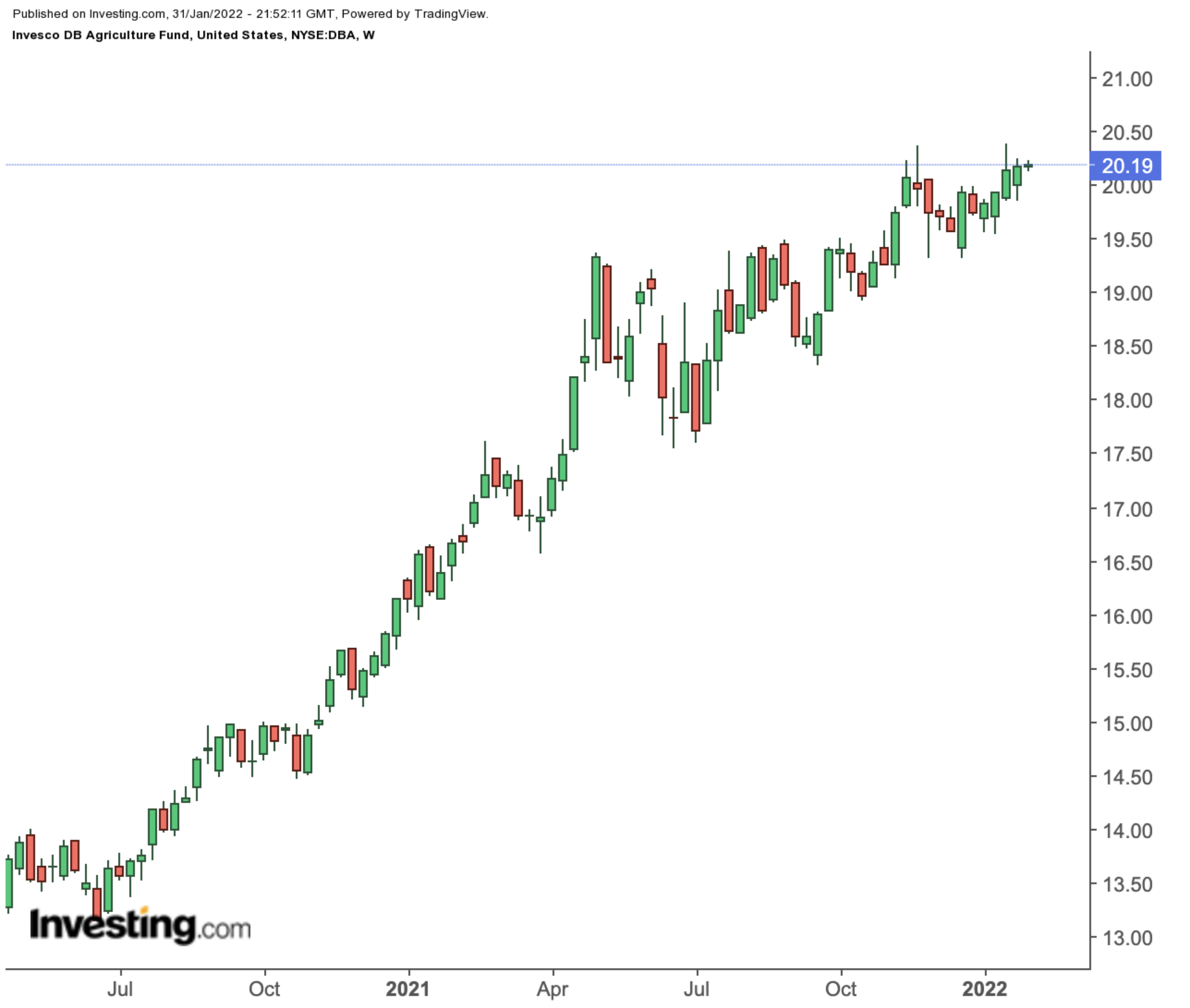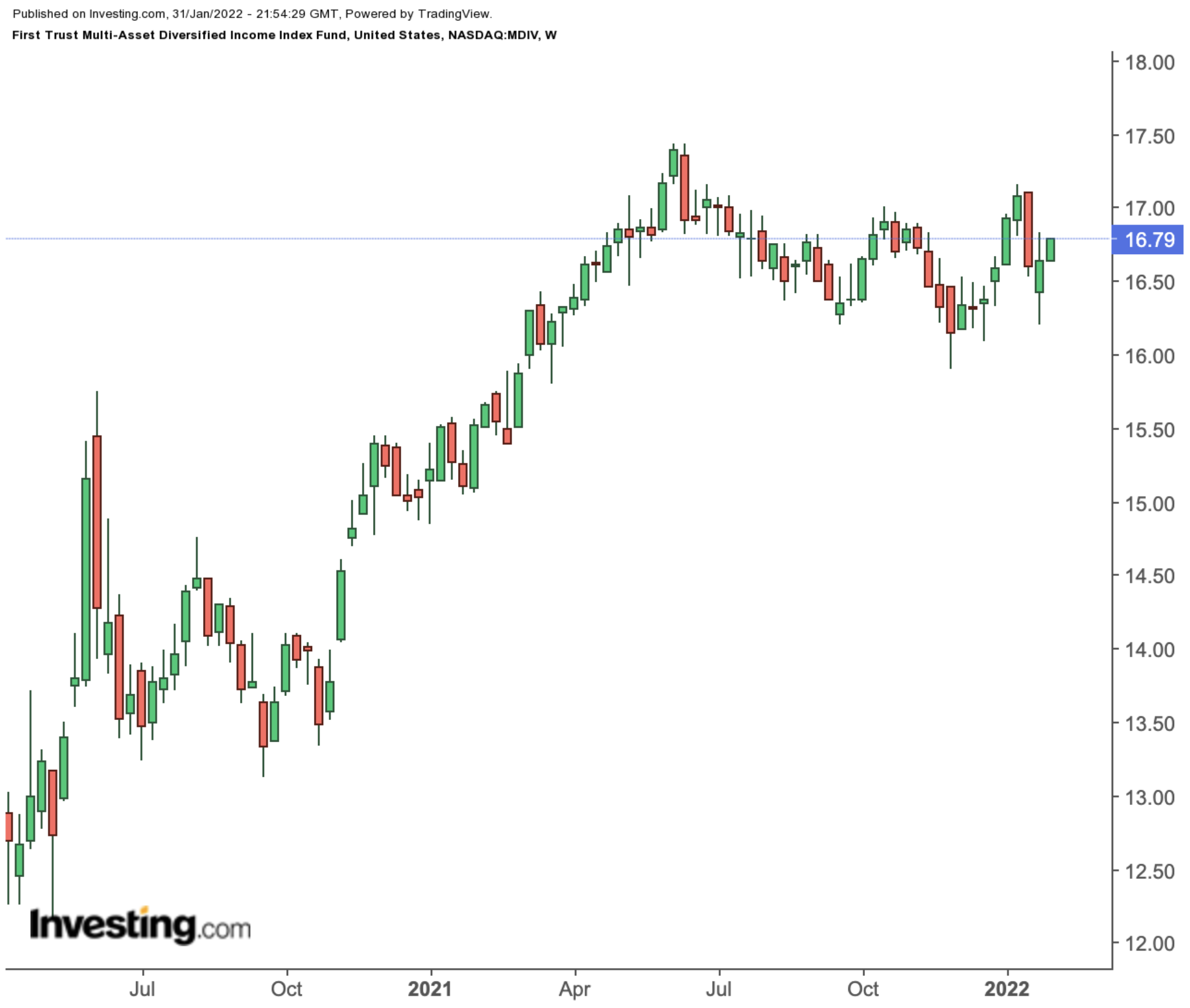Oracle stock plunges on underwhelming forecast, spending increase
The uncertainty caused by soaring inflation levels, a hawkish Fed, and novel COVID-19 variants has left many investors scratching their heads. As a consequence, broader markets have turned south. The S&P 500, the NASDAQ 100, and the Dow Jones are down, respectively, about 5.6%, 9.1%, and 3.7% for the month of January.
Given the increased choppiness, especially during this busy earnings season, Wall Street is debating which asset classes could do better in the coming months. Historically, periods of stock market volatility and high inflation have seen smart money move into industrials, energy, and consumer shares.
Other safe havens typically include gold, agricultural commodities, and base metals. Solid companies that generate earnings and dividends could also provide a reliable hedge.
Meanwhile, exchange-traded funds (ETFs) offer alternatives to individual stocks by diversifying risk exposure. They can also provide diversification among various sectors and assets.
Today’s article introduces two ETFs that performed better than broader indices and many growth shares in January. We believe these funds deserve readers’ attention as they could see positive returns during the year.
1. Invesco DB Agriculture Fund
- Current price: $20.19
- 52-Week Range: $16.31 – $20.39
- Expense Ratio: 0.93% per year
We recently covered two commodity funds, one focusing on precious metals and the other on a wide range of commodities. Our following ETF, the Invesco DB Agriculture Fund (NYSE:DBA), gives specific exposure to future contracts of ten agricultural commodities.

Recent research on agricultural commodities by Rabobank highlights:
“Commodity prices are now supported by inflation in the general economy, including high shipping costs (astronomical for containers), energy and fertilizer prices, as well as a shortage of labor in many countries. Higher farm input costs, expensive shipping, and good demand provide a grim combination. We should see these inflationary pressures upstream move along the supply chain to reach consumers in 2022.”
Launched in early January 2007, DBA tracks the DBIQ Diversified Agriculture Index Excess Return. The fund’s market value is almost $1.05 billion.
Among these futures contracts, we see soybeans (13.40%), corn (12.75%), coffee (12.34%), wheat (12.17%), live cattle (12.01%), sugar (11.15%), cocoa (10.65%), lean hogs (8.77%), feeder cattle (3.89%) and cotton (2.89%).
DBA hit a multi-year high on Jan. 20. It has surged almost 23% over the past 12 months and is up over 2% since the beginning of this year. Investors who want long exposure to investments focusing on agriculture might want to buy dips in the fund.
2. First Trust Multi-Asset Diversified Income Index Fund
- Current Price: $16.79
- 52-Week Range: $15.05 - $17.44
- Dividend Yield: 5.12%
- Expense Ratio: 0.68% per year
The First Trust Multi-Asset Diversified Income Index Fund (NASDAQ:MDIV) exposes five income-producing asset types. Fund managers allocate funds equally among equities, master limited partnerships (MLPs), preferred securities (20%), REITs (20%), and a high-yield corporate debt ETF (20%). Regular readers of this column would know that in addition to ETFs that focus on equities, we regularly cover other asset classes found in MDIV.

MDIV tracks the market-cap-weighted NASDAQ Multi-Asset Diversified Income Index, which is rebalanced quarterly. The fund started trading in August 2012, and net assets stand at $463.7 million.
Close to a third of the portfolio is in the leading ten names. And the fund currently has 125 holdings.
Another fund, namely the First Trust Tactical High Yield ETF (NASDAQ:HYLS), leads the roster with 19.3% of the asset. HYLS mainly invests in high yield debt securities below investment grade (i.e., junk bonds).
Next in MDIV are Annaly Capital Management (NYSE:NLY), Omega Healthcare Investors (NYSE:OHI), Shell Midstream Partners (NYSE:SHLX), and Icahn Enterprises (NASDAQ:IEP).
Passive-income seekers or those looking to park their cash during these volatile weeks might want to research the fund further. In the past year, MDIV returned about 10.5%. Although the fund is down close to 0.4% year-to-date, the current price supports a high dividend yield of over 5%.
